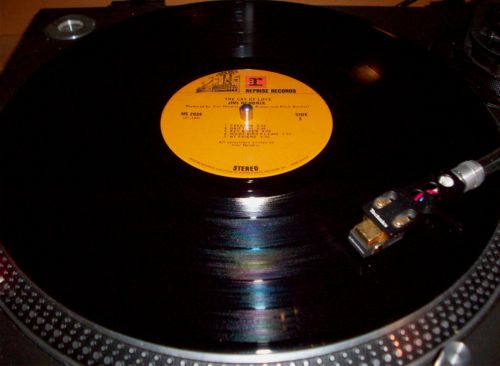

Produced by Jimi Hendrix, Eddie Kramer & Mitch Mitchell
Engineered by Eddie Kramer, John Jansen, Dave Palmer & Kim King.
Source: (Side 1: MS 2034 A 31184 - 1A / Side 2: MS 2034 A 31185 - 1A
Sterling RL on both sides)
Vinyl Transfer & Restoration by Prof. Stoned
Prof. sez:
This pressing is hands down the best sounding source for all these tracks, both on CD & vinyl.
The LP sounds better than the original 1985 Reprise CD which was mastered by Lee Herschberg. It also most definitely sounds better than the EH release 'First rays of the new rising sun' which although sourced from the original mixdown tapes was mastered like a Foo Fighters CD. The sound on the LP sparkles, the mids are lively and it has a deep low-end, something that is lacking a bit on the REP CD (though it still is excellent in its own right).
Cut from the original mastertapes by vinyl cutting/mastering genius Robert Ludwig, who has done no less than five original US Hendrix pressings. This is not a coincidence, as a lot of albums in which Eddie Kramer was involved as a producer/engineer from this era were initially mastered & cut by Ludwig (amongst others Led Zeppelin, Humble Pie & Cactus.)
This was transferred from a near mint copy, still in its shrink with sticker.
The only drawback with some records from this era is the somewhat less than stellar vinyl quality.
The Making Of....
(written by PS)
'The Cry of Love' was the first Hendrix Studio album to appear after his untimely death. Many people feel it is the only posthumous album that Hendrix would have been satisfied with. But even though it is a great album that assumption is not near the truth. Hendrix' death had left a lot of recordings in various stages of completion. A couple of songs were already mixed down to (near-) perfection, but most of them were still incomplete.
After his passing, Michael Jeffrey (Hendrix' manager) hoped to compile three albums out of the enormous pile of tapes that Hendrix left behind. One of them would have to be a soundtrack album to a film called Rainbow Bridge -a project in which Jeffrey was deeply involved- and which he was desperate to turn into a commercial success. However, first there would have to be a regular album containing the strongest recordings. Jeffrey opted not to release a double album because he needed to fulfill his contractual obligations with Warner Brothers.
Eddie Kramer, who was chief engineer of Hendrix' new Electric Lady Studio's and who had been closely involved with the recording process until Jimi's death, was given the unenviable task of completing the album that Hendrix had never finished. Together with Mitch Mitchell, he went through the many tapes that Hendrix had recorded over the past two years. This process that must have been painful to these two people who had worked so closely with Hendrix over the last four years. Although a large share of tapes were not available at that point, (the sessions that Experience had done at the TTG studio's in Oct. 1968 and many of the Record Plant sessions from the spring and autumn of 1969 with the Band of Gypsys), it was correctly assumed that the best material was among the works from the last six months prior to Hendrix death.
But even though Hendrix had written some real strong material in this period, most of it had not been fully realized on tape yet. Therefore, Kramer and Mitchell decided to add overdubbed drum parts on some somes and vibes to 'Drifting' (which Hendrix had considered) in an attempt to upgrade the material. A couple more studio tricks had to be pulled to get to a more finished sounding end result, but -unlike Alan Douglas later- Kramer and Mitchell were keen not to disrespect Jimi's wishes.
The resulting album is great but one cannot help but wonder what it would have been had Hendrix lived. At the same time, 'The Cry of Love' does give a complete image of the musical direction that Hendrix was heading into, more than any other posthumous album. Songs like "In from the storm", 'Freedom", "Drifting" -to name just a few- are masterpieces and we should be happy that Hendrix lived to record these. It's a shame that these songs hardly get played by those classic rock radio stations.